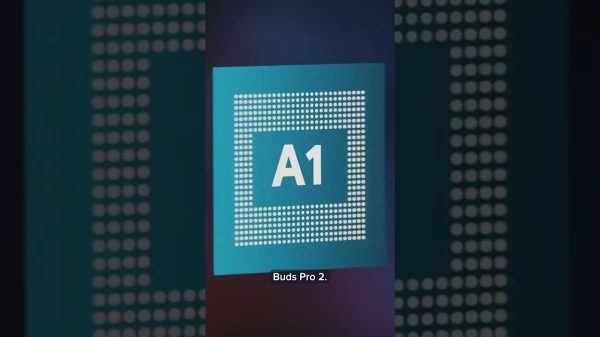At a time when Americans are saddled with more credit-card debt and higher interest rates, a new bill is seeking to cap credit card annual percentage rates at 18%.
Sen. Josh Hawley, a Republican from Missouri, this week unveiled the Capping Credit-Card Interest Rates Act, highlighting how APRs have been climbing.
“Americans are being crushed under the weight of record credit card debt— and the biggest banks are just getting richer,” Hawley said in a statement. “Capping the maximum credit-card interest rate is fair, common-sense, and gives the working class a chance.”
Consumers with a credit-card balance faced an average 22.16% APR during the second quarter, up from 16.6% a year earlier, Federal Reserve figures show.
The Fed has jacked up its benchmark rate to fight inflation, but APRs — like so many other interest rates — hinge on the central bank’s actions.
The bill has a slim shot at passage even as credit-card debt rises, observers say. Americans now have $1 trillion in credit-card debt, up from $887 billion a year ago.
Here’s what to know about this bill:
Hawley’s bill has a slim chance of succeeding
A patchwork of state-level usury laws, dictating the amount of interest rate that can be charged on a particular loan, already exist, which further complicates matters.
For instance, some national banks may charge a higher credit-card rate, depending on where their headquarters and branches are based, according to the Office of the Comptroller of the Currency.
In a research note Tuesday, TD Cowen analyst Jaret Seiberg said the odds are low that Congress will pass Hawley’s bill, and said the senator is “staking out a populist position to energize voters.”
“A federal usury cap has been a nonstarter in the House. We do not see that changing,” Seiberg wrote. (Hawley is running for re-election next year, along with many others in the Senate. The terms of more than 30 senators expire in January 2025.)
“In a research note, TD Cowen analyst Jaret Seiberg said the odds are low that Congress will pass Sen. Josh Hawley’s credit-card bill.”
For over a decade, fights over usury caps focused on unsuccessful Democratic bids to extend a 36% interest-rate cap on loans for military family members to the general public, he noted.
“Those efforts have gone nowhere over concerns about what it would mean for access to credit. It is difficult for us to see why a measure that sets the cap at half this level would now be politically feasible,” Seiberg wrote.
In 2019, Sen. Bernie Sanders, an Independent from Vermont, and Rep. Alexandria Ocasio-Cortez, a Democrat from New York City, introduced the “Loan Shark Prevention Act,” a bill to cap credit-card rates at 15%.
That bill did not get far, but Hawley’s bill comes at a time when other lawmakers are cracking down on consumer fees.
The Biden administration is targeting “junk fees,” while the “Credit Card Competition Act” — proposed by Illinois Sen. Dick Durbin, a Democrat — would take aim at credit-card fees and rework how credit-card payments are processed.
In an interview with Real Clear Politics, Hawley said his bill would put widely-used credit cards on an equal footing with the rates for credit-union cards.
Federally-insured credit unions already have a cap
In fact, credit-card APRs issued by federally-insured credit unions have not surpassed 18% for nearly four decades. The interest rate ceiling is set by the National Credit Union Administration, a federal agency. The rate cap has remained at 18% since 1987.
On Tuesday, however, members of the National Association of Federally-Insured Credit Unions, or NAFCU, a trade organization, raised worries about Hawley’s proposal for an across-the-board rate cap.
While well-intentioned, such a rate cap would tighten access to “safe and affordable” credit, said Greg Mesack, senior vice president of government affairs at NAFCU, and Jason Stverak, deputy chief advocacy officer for federal government affairs at the Credit Union National Association, a trade association for both state- and federally chartered credit unions.
“Credit-card APRs issued by federally-insured credit unions have not surpassed 18% for nearly four decades. ”
“This legislation would push people with marred credit histories and on the financial fringe to payday lenders, as well as discourage future innovation and new products. These raise significant concerns with the bill,” Mesack and Steverak said in a joint statement.
In January, the NCUA board unanimously backed the 18% cap for another 18-month period. That extends the cap through Sept. 10, 2024.
Ahead of the decision, NAFCU urged the federal agency’s board members to establish a 21% cap. The higher ceiling would help the credit unions’ operations and allow them to “more fully serve their communities,” B. Dan Berger, the organization’s president and CEO wrote.
Federally insured credit unions had $76.7 billion in outstanding credit-card debt on their balance sheets during the second quarter, up from nearly $70 billion a year earlier, according to NCUA statistics.
It’s a sliver of the $1 trillion in credit-card debt currently held by Americans.
Some credit unions have restrictions and tradeoffs
Credit cards with capped APRs may sound more tempting than ever, said Matt Schulz, chief credit analyst at LendingTree. But expect to make some trade-offs and be aware of certain restrictions before taking out a credit union’s credit card.
Many credit unions may have membership rules. For example, Navy Federal Credit Union membership includes current and retired members of the armed forces, their families and their household members, and Department of Defense personnel, among others.
Membership at another large credit union, Pentagon Federal Credit Union, known as PenFed, is open to everyone, a spokesman said. Members have to open and maintain a savings account of at least $5 in order to access other PenFed products, he added.
“The APRs on credit union-issued cards have been increasing, although not at the same rate as banks.”
However, the rewards from credit-union cards “are not going to be as lucrative and the balance transfer offers aren’t going to be as long,” Schulz said. A balance transfer allows people to transfer balances from a card with a higher APR to a card with a lower APR, but those lower rates often only last for a certain period of time.
The APRs on credit union-issued cards have been increasing, although not at the same rate as banks, Schulz noted.
Last month, offers from federal credit-union cards ranged between 16.05% and 18%, up from a range of 12.13% to 17.09% in March 2022, he added.
The average rate on new bank and standard-issue credit-card offers are considerably higher: 24.37% in August, up from 24.24% in July, according to LendingTree data.
Like other forms of financing, car loans are also becoming more expensive, and a credit-union card could open up offers to car loans at rates which might beat other lenders, he said.
“A credit card can be a good way to start a relationship with a credit union, and that can be valuable beyond a credit card,” Schulz said.
Read the full article here













